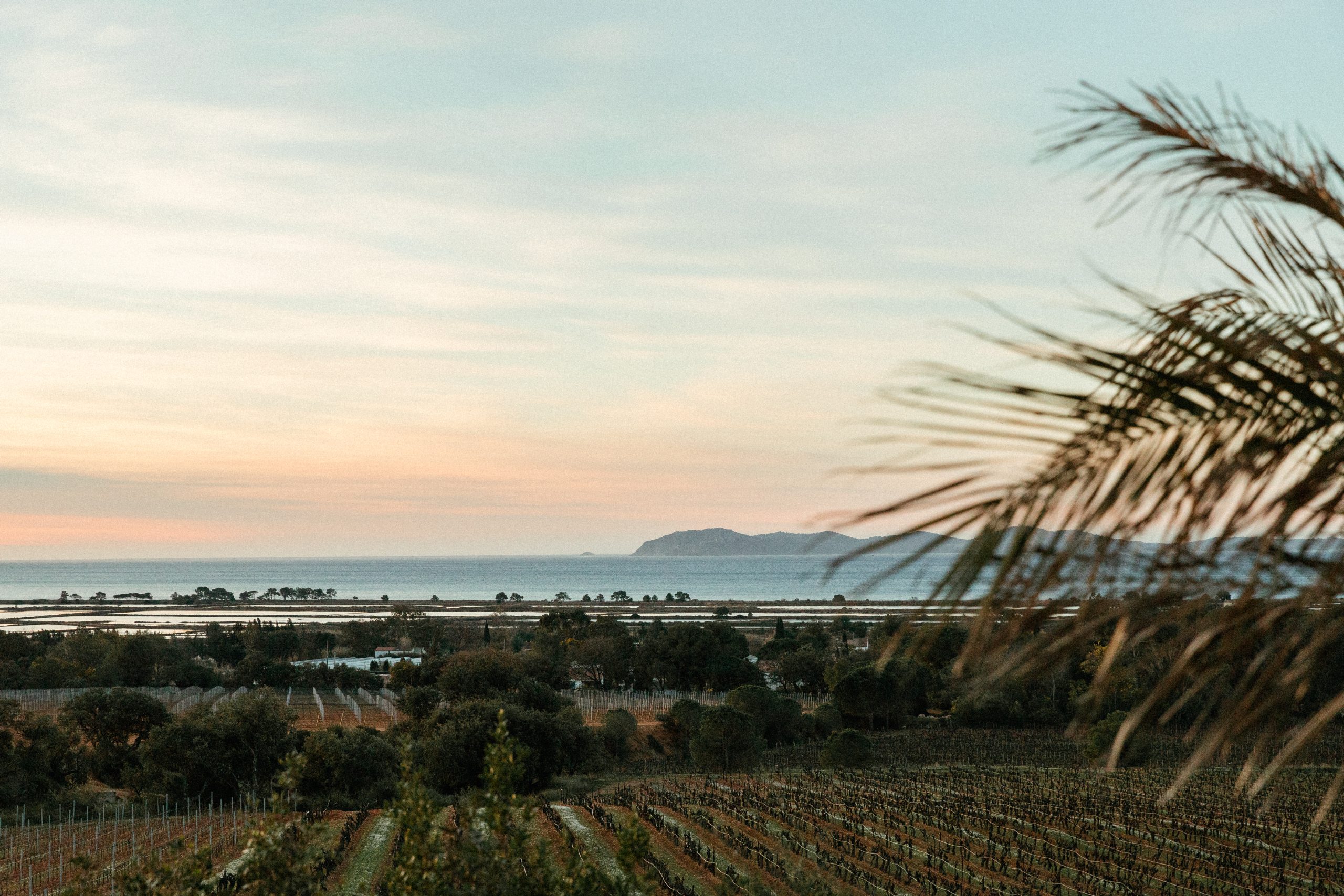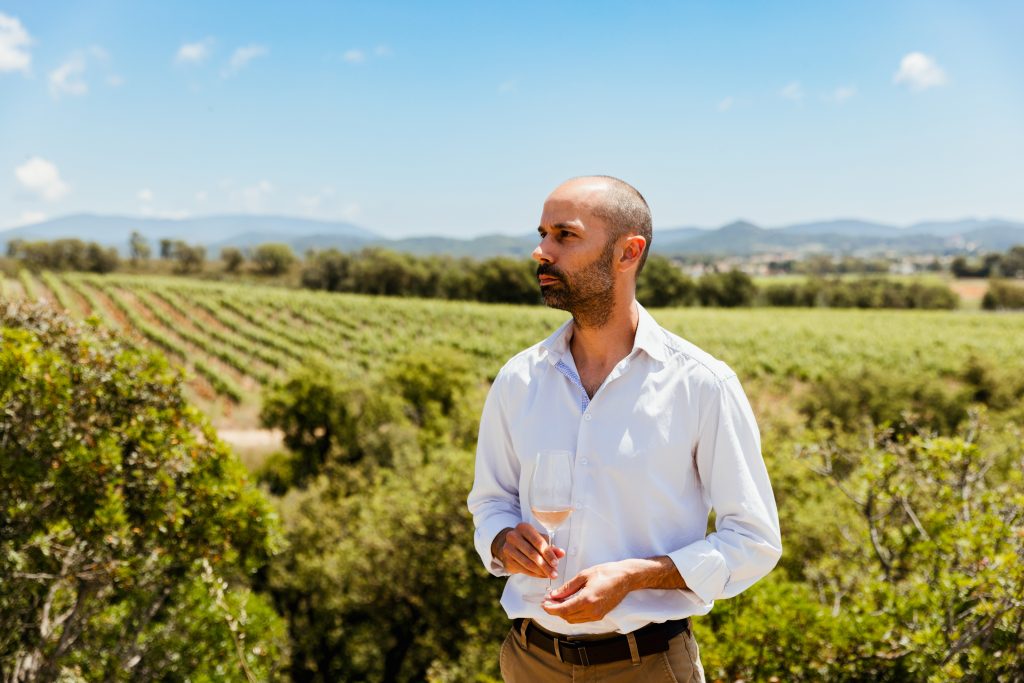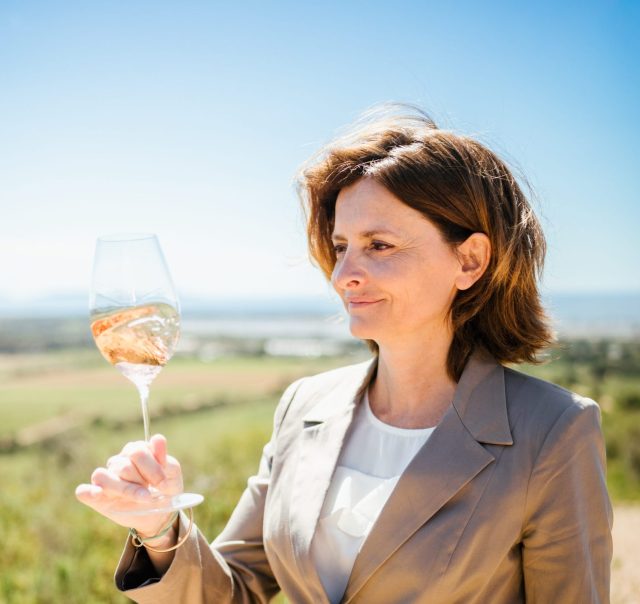This website uses cookies so that we can provide you with the best user experience possible. Cookie information is stored in your browser and performs functions such as recognising you when you return to our website and helping our team to understand which sections of the website you find most interesting and useful.
Château Galoupet: ‘We are obsessed with preserving the diversity of the plot wines’
Château Galoupet, which was acquired by Moët-Hennessy in 2019, has released its first organic wine since conversion as it aims to become “a lighthouse of sustainability for local growers” in its native Provence. Arabella Mileham reports.

The 2023 is the second vintage to be released in the UK since it was acquired by Moët Hennessy in May 2019, after the inaugural 2021 Cru Classé vintage – but the first since organic conversion.
The conversion was a key strategy of the estate following its acquisition, estate director Mathieu Meyer said at a tasting of the Cru Classé 2023 last week.
“Our vision is to nurture an unique ecosystem,” he explained. “True biodiversity is in the soil and that is why we are obsessed by it.”
“What we want is to encapsulate the beauty of the estate, [and create] a rose with intensity and complexity, a gastronomic super refreshing wine but also structured enough to allow versatile food pairings,” he added, noting that the acidity and structure made it a good pairing with steak.
Limited release in 2022
While there was some wine produced in 2022, it was in such small quantities that it was not released into the key UK market – a small amount was sold in France, Germany and Switzerland however, managing director Nadine Fau-Santucci said, so the UK hasn’t seen a release since the inaugural 2021. This was partly due to a process of renewing around 40% of the “exhausted” Tibouren vines according to managing director Nadine Fau-Santucci, but also because of losses incurred after heavy hail fell in June 2023.
“We lost 30% of the crop in six minutes,” she told db.
The estate, one of only 18 Cru Classé in Provence, is located at La Lande-les-Maures and comprises 69 hectares of vineyards along with 77 hectares of protected woodland. It is only one kilometre from the sea, which not only gives spectacular view, Meyer notes, but also has a profound influence on the vineyard in terms of the climate, temperature and wind. The estate is also protected by a nearby salt marsh (which have been a marine sanctuary for the last 15 years), and has forests to the north-west. As such it is a bit of “an iceberg” he says, with very different soils to the rest of Provence.
“In Provence the mother rock is mainly limestone, which you get from Marseilles to Aix-en-Provence, with a ph. which is quite high, but we are on what we call Provence Crystalle, a very old mountain formation that is the same rock formation as Sardinia or Corsica,” he explained. “Because of that, the mother rock is very different. We are on schist, on sandstone with a ph. which will be more acidic than the rest of Provence.”
In addition, the estate subsoil differs from one plot to another and also in terms of the depth of soil. “So the Grenache grown in the northern plots of the estate will be different to that grown in the south.”
As a result, the estate has been divided into 41 different plots, which are harvested, pressed and vinified separately, resulting in 41 micro-vinifications that are then used to create the final blend.
Meyer explains that some plots work better vinified one way, others another.
“We are obsessed with preserving the diversity of the plot wines,” he said. “It is not a one process fits all”.
Around 38% of the wine is vinified for 4-5 months in 600 litre barrels (50% new French oak, 50% one-year-old), although Meyer noted that the team are still “playing with oak”, both new and old, in the constant search “for that truth to terroir”. He argues however that “eventually, the barrel is imperceptible, as we want to stay on the fruit.”
Assemblage variation

Although the assemblage of the wine varies year-by-year – the 2023 comprises 52% Grenache, 16% Tibouren, 15% Rolle, 14% Syrah and 3% Cinsault Semillon, Meyer points out that the ethos remains consistent.
“The criteria is taste – we want to craft something that is unique, we’re not searching for a colour,” he said.
Grenache forms the backbone of the blend, with the maturity of the grapes pushed high to get “silky aromatic fruit… around which we plot the other elements”. This includes Tibouren “an extrovert of a grape” that is rare in Provence, accounting for less than 2% of planting, partly because it is a vigorous vine that is difficult to grow and also difficult to vinify as it can be oxidative. It is however a grape with a “unique personality that is very important” in the blend, adding spice and notes of almond, Meyer said, accounting for around 13-16% of the assemblage, depending on the vintage. Galoupet has around 10 hectares of the “small but vigorous monster”, which varies from 6 years-old to 56, but the older, less productive vines are in the process of being replaced, Fau- Santucci explained as younger vines give fruit with greater concentration.
Also included are Syrah and Rolle, which are co-pressed and vinified together – a process that isn’t easy, given that they need to be harvested at the same time, however Meyer explains that it is the best way to get the fruitiness of the Surah and the exotic notes of Rolle.
“When we added pure Syrah, it was too heavy and too much red wine, but co-pressed, it taste gives great acidity,” he says. A proportion of the Syrah-Rolle is aged in 600L French oak barrels to enhance the fruit “and add another layer of flavour and complexity”, an apricot fromage frais element to the final blend.
A small amount of Cinsault and Sémillon are added and also Filtrat, the pulp from the pressings across the 40 plots that is cooled, left for two weeks and gives “great extraction of flavour” Meyer explains. “It is a very intense wine in terms of flavour and structure and perfect to be oaked – it needs to be strong enough for the wood.”

The assemblage process is “complex” and takes time. “The combinations are endless and it takes time to find the perfect one to bring the complexity and complexity of the terror, and reflect the DNA of Château Galoupet,” Meyer notes.
Related news
A 'challenging yet surprising' vintage for Centre-Loire in 2024

